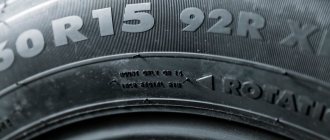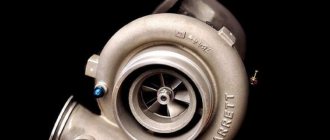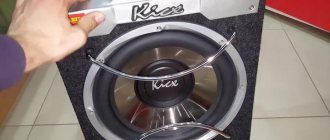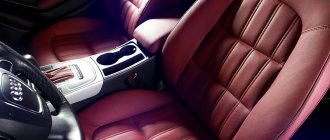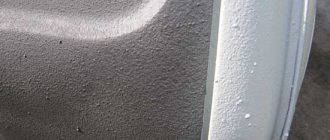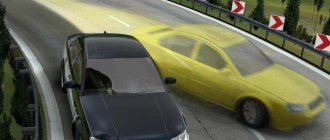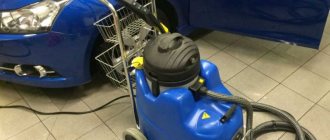Almost every one of us owns a car. Over the course of long-term use, the vehicle loses its appearance. This is due to the fact that the paintwork of a car, under the influence of weather factors, aggressive chemicals, loses its shine, becomes covered with chips, scratches, rust and other defects. The way out is to paint the car. Most citizens trust this procedure to experienced painters. You can carry out the manipulations yourself. The most important stage in the implementation of a complex of works is preparing the car for painting. In this article we will tell you how to do it yourself and focus on the nuances.
Minimum temperature for painting
If you are painting a car in the cold season, then you should figure out in advance at what minimum temperature you can paint a car . Although many car enthusiasts tell stories about how they successfully painted a car body even at zero temperatures, few of them mention the consequences of such a blatant failure to comply with technical standards. Regardless of the material used, drying time at low temperatures increases by more than 2 times. Even when processing the coating in the garage, the paint may begin to run off. Just a small draft with a drop in temperature will be enough to ruin all your work. Experienced experts believe that 15°C is the minimum temperature at which a car can be painted . If your garage is not equipped with the necessary equipment, then do not even try to paint your car at the wrong time of year.
What is the danger of too high a temperature for painting?
Excessively high temperatures can harm the painting process just as much as cold temperatures. Inexperienced craftsmen often use a hair dryer to maintain the desired temperature of the coating being painted. It is strictly not recommended to repeat this experience yourself. Even if the painting seems successful to you, during use it may begin to peel and swell. If you already understand at what temperature you can paint a car , then you should take into account one more important detail. The temperature of the paint, varnish and coating should be the same. Any violation of this rule will significantly reduce the life of the coating. It will also lose its rich shine and become matte pale. The maximum temperature for successful car painting is 25°C, and the recommended temperature is 20°C. It is very important to ensure that there are no temperature changes during the painting process. Even if acceptable limits are observed, sudden changes can lead to undesirable consequences.
Before painting a car with acrylic paint in low or high temperature conditions, get a ventilation system, the necessary lighting, a spray gun, heating and a compressor.
Last time we sanded the putty, now our surface is smooth, without dents or scratches. It would seem that what else is needed - take a spray gun and paint! But no, only half the job is done. The next strategically important stage is priming.
Today you will find out
Often, experts, looking around at some “nine” dotted with spots of rust, competently declare to the owner: “Everything is clear, the primer was not applied.” In fact, a dozen or two reasons can lead to such a defect, and as for the primer, it is generally impossible to paint a car without it so that the paint does not fall off within a week.
Why use primers before painting? Firstly, for aesthetic purposes. Obtaining high visual characteristics of a paint coating is not so easy. To hide the rough texture of the metal, the places where coatings transition from one to another (putty to metal, metal to old paintwork), to remove sanding marks and the smallest pores on the putty, special primers have long been applied under the paint - levelers or fillers.
However, you won’t be satisfied with just the decorative effect. It is also necessary for the car body to last as long as possible. This can only be achieved by applying another primer directly to the metal - anti-corrosion.
Today we will work with both.
Preparing the car for painting
The process of preparing a car body for painting takes about 80% of the time allotted for the entire job. Preparatory work requires, first of all, accuracy, attentiveness, as well as adherence to technology and strict consistency.
First of all, all existing attachments and related parts (moldings, decorations, lights, locks, fittings and much more) must be removed from the car body. Then you should wash the car body with special care with a special shampoo, and be sure to dry all existing moisture with a hairdryer. If you want to paint a separate part of the body, you need to take care of the complete protection of other parts and elements of the car (you can additionally use stencils made of paper or polyethylene). The stencils are secured using tape; in some cases it is necessary to create a smooth and neat border; it is recommended to use construction tape.
The last efforts must be directed towards degreasing the working surface; for this we use special chemical compounds.
Before as…
Before you start priming, do not forget to cover the “non-working” parts of the body with masking tape and film (or paper). Unless, of course, you want to spend a long time and painfully scrubbing the glass, handles or moldings off the ground.
If you are priming partially, when masking, do not paste it too close to the repair area in order to avoid applying the primer “end-to-end” - otherwise a step will form, which may eventually be visible even on the paint. You can read more about camouflage here.
When you degrease the surface before priming, remember that the putty cannot be heavily wetted with a degreaser, as it absorbs and retains moisture for a long time. Therefore, it is enough to lightly walk over it with a dampened napkin.
Puttying the surface
After carefully inspecting the car, areas that require repair are identified. Dents, cracks and chips are filled with putty. Before application, the composition is thoroughly mixed, after which the hardener is added. The putty dries quickly, so it will be difficult to remove excess.
The amount of compound required to fill the defect must be carefully determined. When applying the product, the spatula is held at an angle. The putty is spread across the scratch in a thin layer. If necessary, after the material has dried, the application is repeated.
After the composition has set, grinding of the surface begins. Developing powder is used to identify problem areas. The surfaces of the body and bumpers are treated with sandpaper of different grain sizes. To sand large areas, use a sander.
Preparing the soil
Before diluting, the soil must be thoroughly shaken and mixed to lift the necessary components from the bottom of the jar.
On average, one part requires about 150-200 grams of undiluted primer. Pour the required amount of soil into a dry, clean container and begin mixing.
To prepare a one-component (1K) primer, it is enough to add the amount of diluent specified by the manufacturer (often 5-20%). Hardener is not added to one-component products.
If you are dealing with a two-component (2K) primer, it is first mixed with the appropriate hardener in the strict volumetric ratio indicated on the can (for example, 2:1), and then the mixture is brought to the desired viscosity by adding a thinner (5-20%). Read more about preparing paints and varnishes here.
By the way, in some cases the same material, depending on the application version, can be prepared differently. For example, many reclaimed primers can be used in either a standard sanded version or a wet-on-wet version (in which case more thinner is added).
Be that as it may, before preparing the material, read the manufacturer's recommendations.
To maintain mixing proportions, it is convenient to use special measuring containers and rulers that contain all the necessary markings.
When filling the prepared soil into the gun tank, be sure to filter it through a special funnel with a mesh filter (in extreme cases, through a nylon stocking
